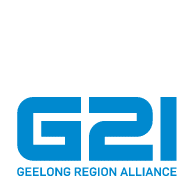G21 REGION PROFILE
The G21 Region Profile (2019 edition) is a marker-in-time, providing a snapshot of our region’s current vital statistics.
It is an invaluable reference for business, government and community-sector planning, and as a resource for G21 as it advocates on behalf of the region.
It is intended to be read in conjunction with the Geelong Region Plan, which is the state and federal government-adopted blueprint for the region towards 2050.
The wealth of information assembled in the Profile paints a detailed and vibrant ‘words and numbers picture’ of our region.
It includes information on subjects as diverse as population demographics, economic development, climate and rainfall, urban settlement, social disadvantage, education, community services, crime rates, property values and human health and wellbeing.
FOR INSTANCE, DID YOU KNOW:
- The G21 region has an older population than the whole of Victoria; with 18.1% of the region’s residents over 65 years, compared to 15.6% for Victoria.
- More than 17,000 workers commute from Geelong to greater Melbourne for work each day, while about 6,500 come the other way. Much of the commuting is by train, with 8.67 million trips in 2017-18, which is up from 3.89 million in 2012-13.
- About 60% of households in the G21 region own two or more cars, which is above the state average of 56%. So it’s unsurprising that about 74% of people go to work by car in the G21 region; well above the state average of 68%.
- Of the region’s 147,000 dwellings about 18% are unoccupied, due largely to the number of holiday homes. This is well above the state average of 11%.
- In 2017 the region exported about $7.9 billion, with more than half (53%) coming from the manufacturing sector.
The G21 Region Profile (2019) was compiled for G21 by Geelong-based consultancy – Civic Collective.
The G21 Region Profile is supported by five municipal-specific companion profiles — covering Colac Otway, Golden Plains, Queenscliffe, Surf Coast and Greater Geelong — and sets of data tables.



